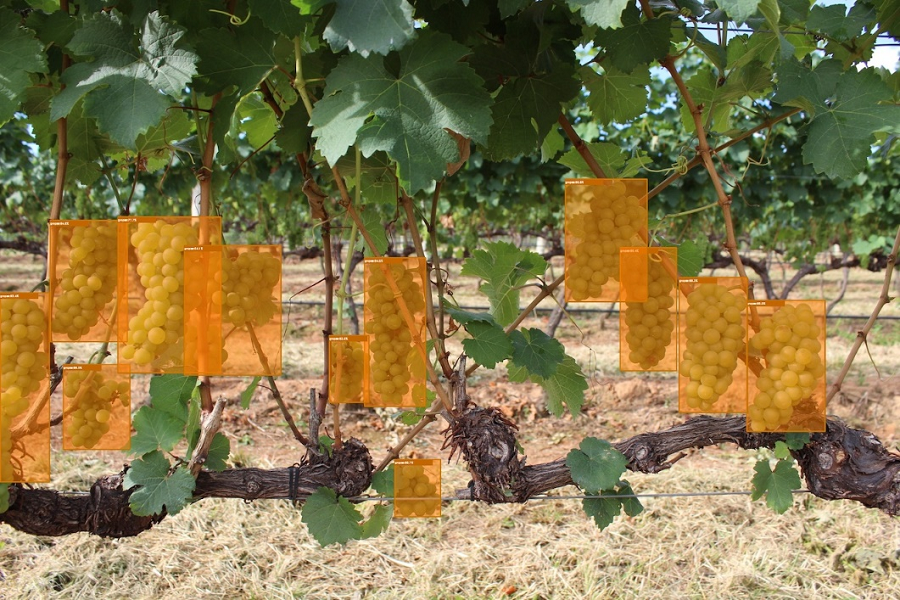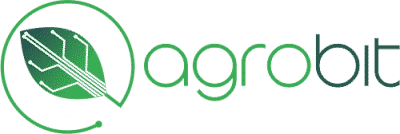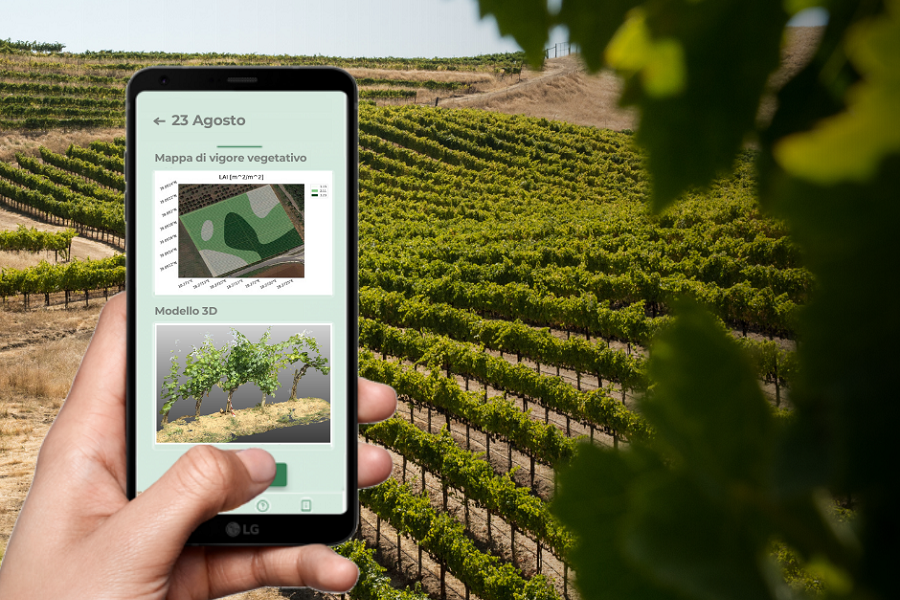by Antonio Donnangelo
Share

Introduction
In the context of modern agriculture, production monitoring and yield estimation of crops represent fundamentally important but also extremely complex operations. Fortunately, thanks to ongoing technological advances, we have a wide range of tools and methodologies that enable us to address these challenges with greater precision and efficiency.
In the wine industry, for example, traditional techniques for estimating yield, such as manually counting bunches of grapes per unit area or using scales to weigh them, often prove inaccurate and require considerable labor effort. The introduction of remote sensing has certainly revolutionized this practice. Leveraging remote sensing images, it is now possible to monitor plant health and correlate plant vigor, using indicators such as the NDVI index, to grape yield. This non-destructive approach allows for good yield predictions but still can be influenced by extreme events, such as hailstorms or water stress, which can affect these estimates.
Another revolutionary methodology is proximal sensing, which uses Computer Vision techniques and Artificial Intelligence (AI) algorithms to analyze images directly in the field. This approach makes it possible to directly detect clusters, and even berries, nondestructively and continuously.
iTractor: Proximal Sensing, Computer Vision and AI
iTractor is a rental service for stereoscopic cameras, which, mounted on tractors, make it possible to collect accurate data Throughout the entire production season. These cameras allow an accurate estimate of yield , providing information about the fruit and detecting any signs of disease through the use of advanced Computer Vision and AI algorithms.
The iTractor setup is done by mounting a dual camera covering both sides of the vineyard on the front of the tractor. This optimal arrangement allows even partially covered clusters to be handled, ensuring an accurate estimate of yield, including what is present under the canopy of the plants.
The operation of the system is based on the preliminary identification of a specific area of analysis (Fig. 1), then, a cloud-based artificial intelligence unit processes the collected data and by segmenting the areas of interest, which may include individual clusters, arrives at the count of the berries themselves. The use of automated algorithms eliminates human error and simplifies data processing, enabling rapid and reliable vineyard assessment.

Fig.1: Scheme of operation of the system algorithms. Left (first picture) raw data, middle (second picture) cluster identification, right (third picture) berry identification.
Installation of the system is simple and requires only a 12-volt power supply. The latest version of the camera features improvements regarding GPS and RTK, ensuring more accurate results. In addition, the presence of two parallel LEDs allows for optimal operation during different low light conditions, such as early morning or late evening, when the coolness of the day is conducive to field activity. The results obtained by this system have an accuracy of up to 92 percent, with a margin of error in detail detection of 9 percent. These results are provided in both raw and map formats, including the already processed yield (Fig. 3).

Fig.2: Example of a vineyard yield map.
Conclusions
The complexity and variability of environmental conditions, often influenced by climate change, require an ongoing approach to research and innovation to adapt monitoring and estimation methods to new conditions. Adoption and development of advanced technologies and accurate data collection are essential to address current and future challenges in agriculture, ensuring more efficient, sustainable and resilient crop management.
Accurate data collection emerges as a key element in meeting future challenges and ensuring the sustainability and resilience of the agricultural sector. Knowing one’s fields enables more effective and informed management , and therefore services such as iTractor emerge as valuable resources to address this challenge, enabling not only accurate yield estimation but also early identification of possible disease risks.
The use of tools such as iTractor provides objective data that help mitigate the risk of estimation errors, thus ensuring greater safety and reliability of agricultural operations.
In damage situations, such as hailstorms, ungulates, etc… , these objective data can assist estimators in damage assessment, significantly reducing the margin of error.
For more information, you can view the recording of the webinar on iTractor, in partnership with Awentia, at the following link: https://youtu.be/oe2lI94q_Ws?si=2C1oD1G48TJB51B8




